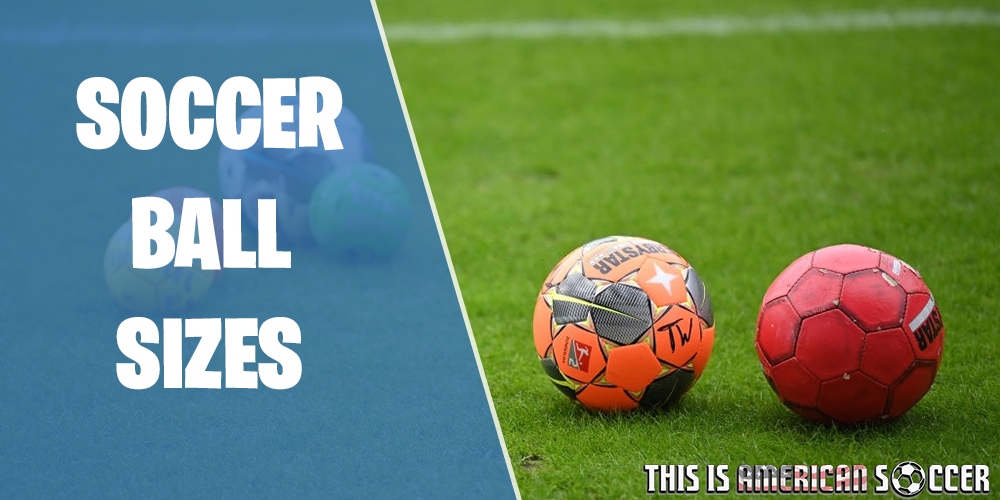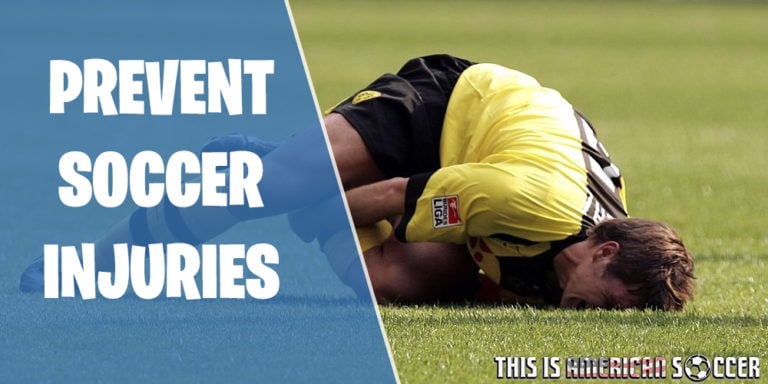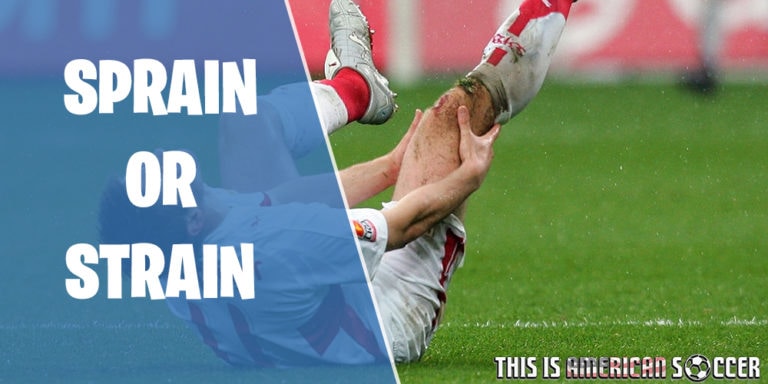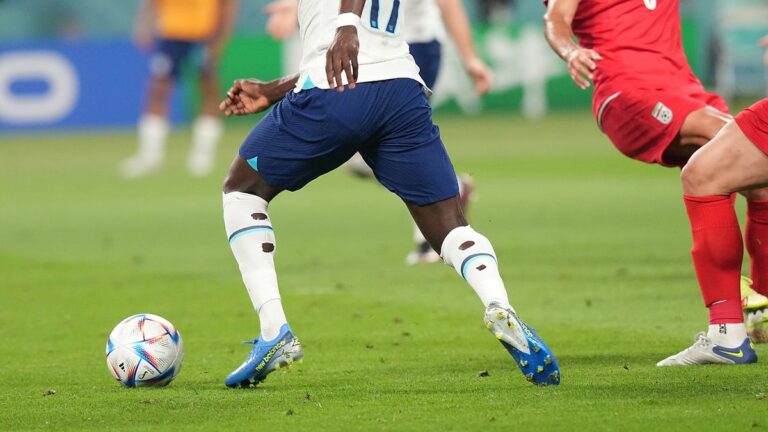With so many different soccer ball sizes, where do you start? It’s essential that you choose the right ball for the job. Here we have all the information you need to make a decision.
Soccer is undoubtedly one of the most loved and played games around the world.
However, the sheer variety of ball sizes and types available can be daunting for new players.
Soccer balls come in multiple colors, designs, and materials, but the primary distinction between different options lies in their sizes.
They vary according to age and league rules.
Naturally, soccer balls preferred by one player won’t be suitable for another unless they belong to the same skill level.
Customarily, the preference of which ball to select depends upon the player’s age and expertise level.
In today’s discussion, we are going to take a close look at the different soccer ball sizes available,
And we will also answer some common questions regarding soccer ball sizes (see also ‘What Size Soccer Ball Is Best By Age?‘).
Without further ado, let’s get the soccer ball rolling.
Why are there different size soccer balls?
Before we dive into the details, consider this for starters: why is the size of the ball so very important for players?
Just as everyone feels comfortable in clothes that are tailor-made according to their size, the same is true for soccer balls.
Unless the ball a person is using fits their game-play, they will not feel comfortable using it.
Most commonly, they range from size 1 to 5, with the age limit increasing according to size number.
While adults are usually safe when it comes to choosing a ball, it’s younger players that make the mistake of selecting a ball that’s way out of proportion for their age.
As a result, they fail to develop their skills from an early age, and this can have significant effects on their game later on in life.
That’s why, from the very outset, it’s essential to ensure that parents and coaches take the initiative to
match the ball to the players’ ages.
With that in mind, let’s take a tour of the different balls available, beginning with the smallest soccer ball first.

Soccer ball sizes
In this table you’ll find all soccer ball sizes that are available:
| Age | Ball Type | Size | Weight |
|---|---|---|---|
| 3 years and under | Size 1 | 18 - 20 inches | 200 grams |
| 3 - 5 years old | Size 2 | 20 - 22 inches | 250 grams |
| 5 - 8 years old | Size 3 | 23 - 24 inches | 300 - 320 grams |
| 8 - 11 years old | Size 4 | 25 - 26 inches | 350 - 390 grams |
| 12+ years old | Size 5 | 27 - 28 inches | 410 - 450 grams |
Size 1 soccer ball
Size 1 is the smallest ball available and it’s the soccer ball for kids in the three years or less age group.
The ball circumference is about 18 to 20 inches, which makes it pretty tiny for a soccer ball.
These are primarily meant for kids to kick around and get a feel of the game.
However, often adults also use this type of ball for practicing their moves, as the small size of the ball makes it somewhat difficult to maneuver.
Many collectors even keep the balls as souvenirs of famous clubs or players that they support.
Size 2 soccer ball
The size 2 ball is almost similar to the size 1 ball, with the only difference being the circumference, which is slightly larger at 20 to 22 inches.
Size 2 is mainly targeted towards a marginally older kids group of 3 to 5 years old.
As with the size 1 ball, this size is used by adults and kids alike for honing and improving their game-playing skills.
Many experienced players such as Jose Francisco Torres and Michael Orozco even use these as training soccer balls practice soccer tricks and stunts.
Plus, clubs bring out special edition balls in size 2 that can be bought as collectibles.
Size 3 soccer ball
Size 3 is the smallest size used in actual matches and is targeted towards the group of 5 to 8 year old children.
Size 3 balls weigh about 300 to 320 grams and have a larger circumference of 23 to 24 inches.
This makes size 3 balls suitable for use during real-time game-play.
Playing with size 3 balls also helps to improve the skill levels of the player.
Size 4 soccer ball
Size 4 balls weigh about 350 to 390 grams and are aimed at players who are 8 to 11 years old.
The usual circumference of the size 4 balls is approximately 25 to 26 inches, which makes them perfect for handling by this group of kids.
The size 4 ball is only slightly smaller than a regulation soccer ball.
Why then can’t players in this age group directly use the size 5 soccer ball (to be discussed next)?
Because players in this age group usually haven’t developed enough skills or physical strength to handle size 5 balls properly.
The size 4 ball helps these children to improve their ball control and dribbling skills, which kids of this age group might find challenging to do using a larger, heavier ball.
Size 5 soccer ball
Size 5 is the size used in professional soccer as well as international matches.
Designed for players aged 12 and up, size 5 balls weigh around 410 to 450 grams and have a circumference of 27 to 28 inches.
For professional matches, the size 5 balls have to be approved by FIFA after a thorough inspection across multiple parameters such as size and shape retention, pressure loss, rebound, and water absorption.
Keep in mind that FIFA inspected balls may carry a higher price tag.
Now that we know all about the different soccer balls, let’s answer some common questions that most budding soccer players, especially children may have.
Training soccer ball
Training soccer balls are exactly the same size as the normal soccer balls.
Futsal ball
Futsal balls are different in that they are about 30% less bouncy than regular soccer balls, and should ideally never bounce more than once, and are generally made of softer materials.
The difference in the ball is key to futsal. It stays on the ground better because it’s smaller and heavier, which means its easier to control, allowing the players a more intricate style of play.
The size of a futsal ball depends on the age of the players, although the standard ball for most games is size 4.
If the players are between the ages of 9 to 13, the ball drops to size 3.
However, a FIFA regulated futsal ball is more specific in it’s requirements:
400 – 440 grams, 24.6 inches to 25.1 inches.
Indoor soccer ball
The correct indoor soccer ball size is size 5, 27 – 28 inches.
Indoor soccer balls are regular balls rather than those used in futsal, they have a higher bounce, and the material is harder and more durable.
The walls are used in indoor soccer during game play, so as you can imagine, it wouldn’t be much fun with a ball that just flops on the ground when you go for a rebound!
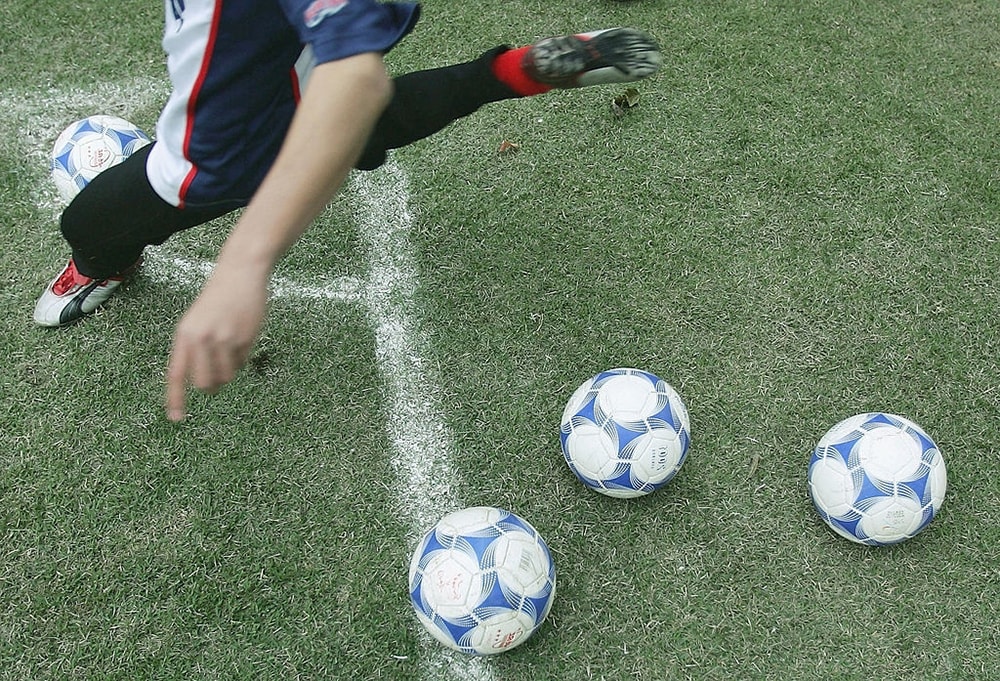
Frequently asked questions
What size soccer ball for high school?
Size 5, 27 – 28 inches.
As most children in high school are 13 and above and have played the game previously, they can use a size 5 comfortably.
What size soccer ball for adults?
The official standard soccer ball size for adults is size 5,27 – 28 inches. This size is used for both professional and amateur players.
Is there a size 6 soccer ball?
Officially, a size 6 ball doesn’t exist.
But there are a few startups who are juggling with the idea of introducing one.
We guess only time will tell if size 6 balls come out!
Looking for related or relevant sources?
Below you find a list with all the relevant or related sources we’ve used:
Looking for articles that are similar or relevant to soccer ball sizes?
Below you find a list with all our articles that relate to this topic:

